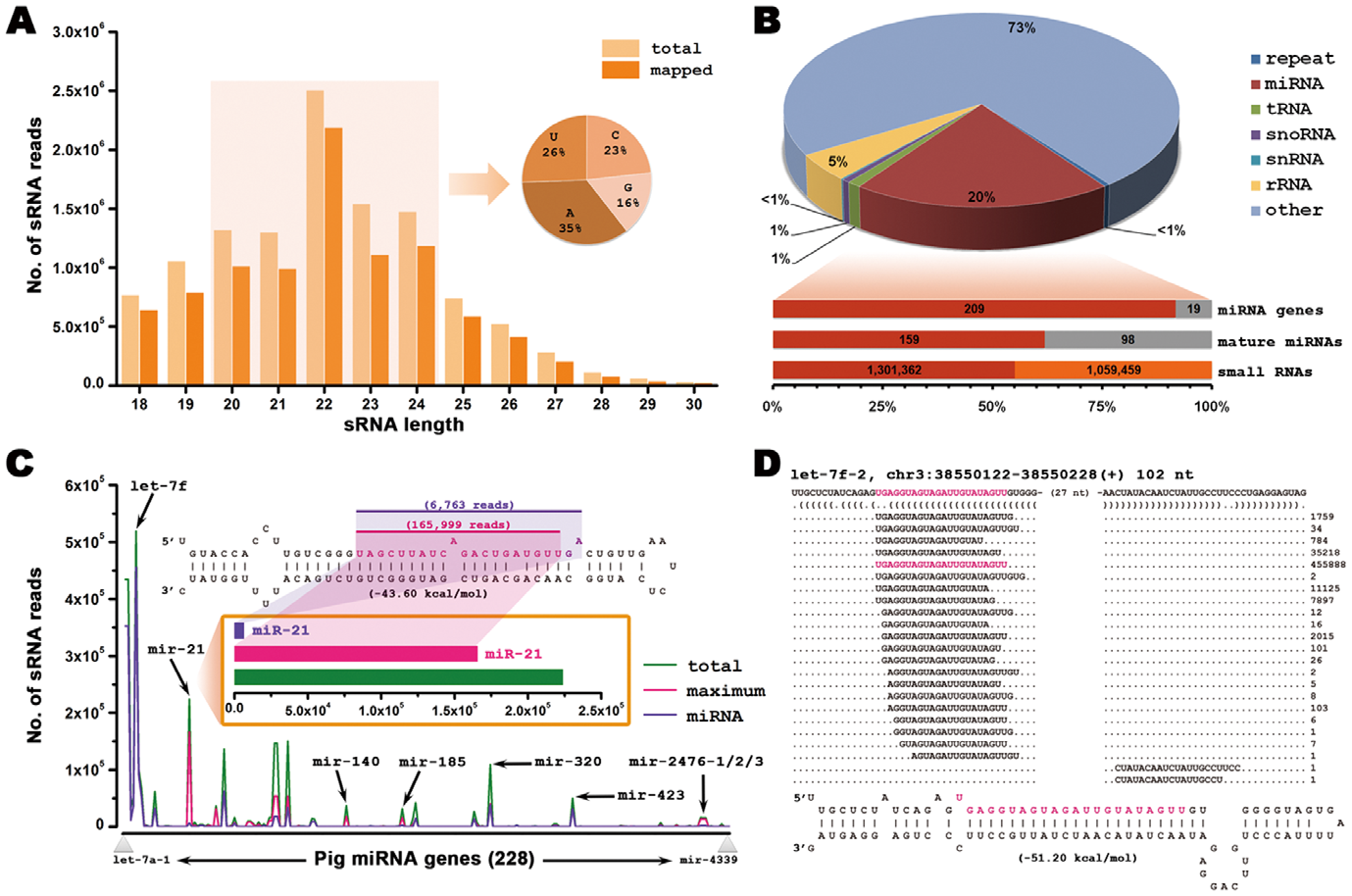Pseudorabies virus infected porcine epithelial cell line generates a diverse set of host microRNAs and a special cluster of viral microRNAs.
Wu YQ, Chen D#, He HB, Chen DS, Chen LL, Chen HC, Liu ZF
PLoS One. 2012;7(1):e30988. doi: 10.1371/journal.pone.0030988.
Pseudorabies virus (PRV) belongs to Alphaherpesvirinae subfamily that causes huge economic loss in pig industry worldwide. It has been recently demonstrated that many herpesviruses encode microRNAs (miRNAs), which play crucial roles in viral life cycle. However, the knowledge about PRV-encoded miRNAs is still limited. Here, we report a comprehensive analysis of both viral and host miRNA expression profiles in PRV-infected porcine epithelial cell line (PK-15). Deep sequencing data showed that the 6 kb intron of the large latency transcript (LLT) functions as a primary microRNA precursor (pri-miRNA) that encodes a cluster of 11 distinct miRNAs in the PRV genome, and 209 known and 39 novel porcine miRNAs were detected. Viral miRNAs were further confirmed by stem-loop RT-PCR and northern blot analysis. Intriguingly, all of these viral miRNAs exhibited terminal heterogeneity both at the 5' and 3' ends. Seven miRNA genes produced mature miRNAs from both arms and two of the viral miRNA genes showed partially overlapped in their precursor regions. Unexpectedly, a terminal loop-derived small RNA with high abundance and one special miRNA offset RNA (moRNA) were processed from a same viral miRNA precursor. The polymorphisms of viral miRNAs shed light on the complexity of host miRNA-processing machinery and viral miRNA-regulatory mechanism. The swine genes and PRV genes were collected for target prediction of the viral miRNAs, revealing a complex network formed by both host and viral genes. GO enrichment analysis of host target genes suggests that PRV miRNAs are involved in complex cellular pathways including cell death, immune system process, metabolic pathway, indicating that these miRNAs play significant roles in virus-cells interaction of PRV and its hosts. Collectively, these data suggest that PRV infected epithelial cell line generates a diverse set of host miRNAs and a special cluster of viral miRNAs, which might facilitate PRV replication in cells.
